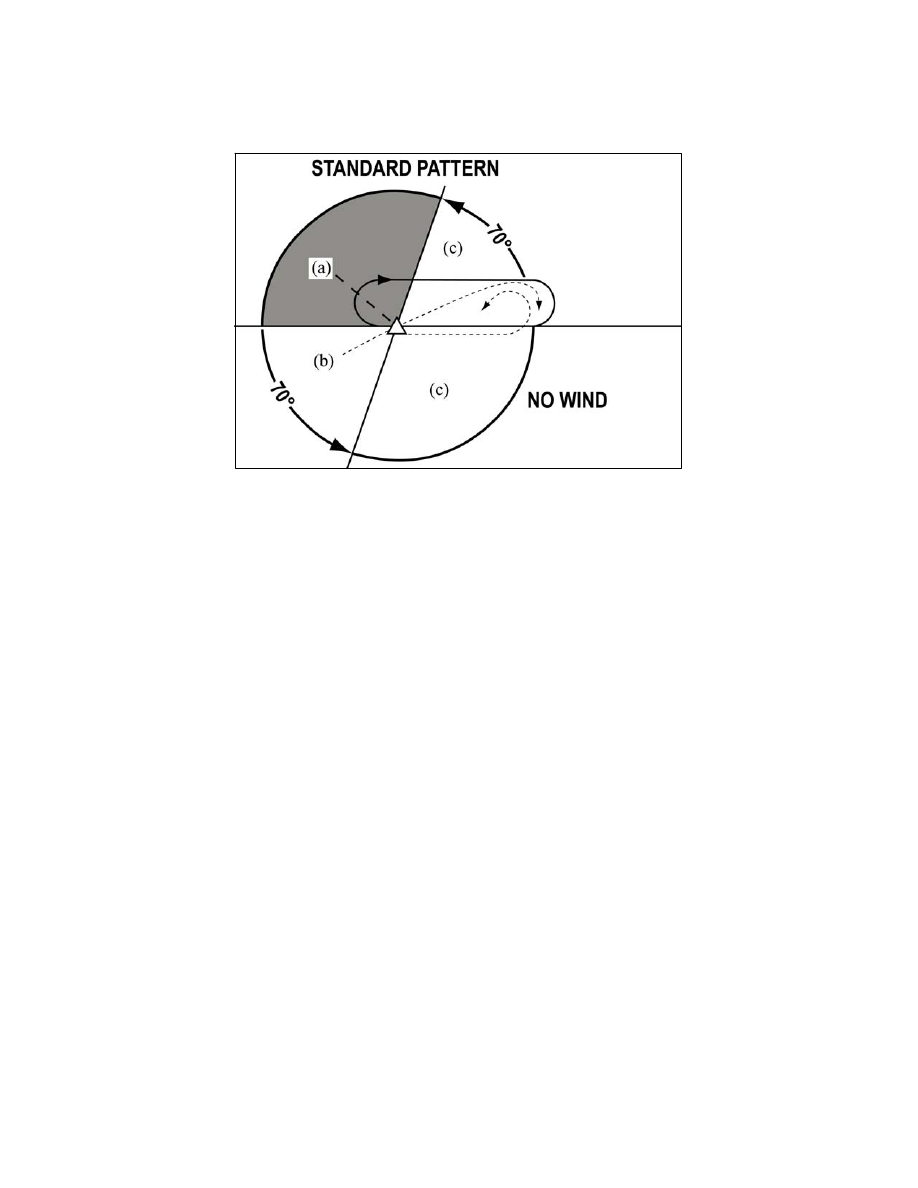
AIM
8/15/19
5
−
3
−
22
En Route Procedures
FIG 5
−
3
−
4
Holding Pattern Entry Procedures
3. Entry Procedures.
Holding protected
airspace is designed based in part on pilot compliance
with the three recommended holding pattern entry
procedures discussed below. Deviations from these
recommendations, coupled with excessive airspeed
crossing the holding fix, may in some cases result in
the aircraft exceeding holding protected airspace.
(See FIG 5
−
3
−
4.)
(a) Parallel Procedure.
When approaching
the holding fix from anywhere in sector (a), the
parallel entry procedure would be to turn to a heading
to parallel the holding course outbound on the
nonholding side for one minute, turn in the direction
of the holding pattern through more than 180 degrees,
and return to the holding fix or intercept the holding
course inbound.
(b) Teardrop Procedure.
When approach-
ing the holding fix from anywhere in sector (b), the
teardrop entry procedure would be to fly to the fix,
turn outbound to a heading for a 30 degree teardrop
entry within the pattern (on the holding side) for a
period of one minute, then turn in the direction of the
holding pattern to intercept the inbound holding
course.
(c) Direct Entry Procedure.
When ap-
proaching the holding fix from anywhere in
sector (c), the direct entry procedure would be to fly
directly to the fix and turn to follow the holding
pattern.
(d)
While other entry procedures may enable
the aircraft to enter the holding pattern and remain
within protected airspace, the parallel, teardrop and
direct entries are the procedures for entry and holding
recommended by the FAA, and were derived as part
of the development of the size and shape of the
obstacle protection areas for holding.
(e) Nonstandard Holding Pattern.
Fix end
and outbound end turns are made to the left. Entry
procedures to a nonstandard pattern are oriented in
relation to the 70 degree line on the holding side just
as in the standard pattern.
4. Timing.
(a) Inbound Leg.
(1)
At or below 14,000 feet MSL: 1 minute.
(2)
Above 14,000 feet MSL: 1
1
/
2
minutes.
NOTE
−
The initial outbound leg should be flown for 1 minute or
1
1
/
2
minutes (appropriate to altitude). Timing for
subsequent outbound legs should be adjusted, as
necessary, to achieve proper inbound leg time. Pilots may
use any navigational means available; i.e., DME, RNAV,
etc., to ensure the appropriate inbound leg times.
(b) Outbound leg
timing begins
over/abeam
the fix, whichever occurs later. If the abeam position